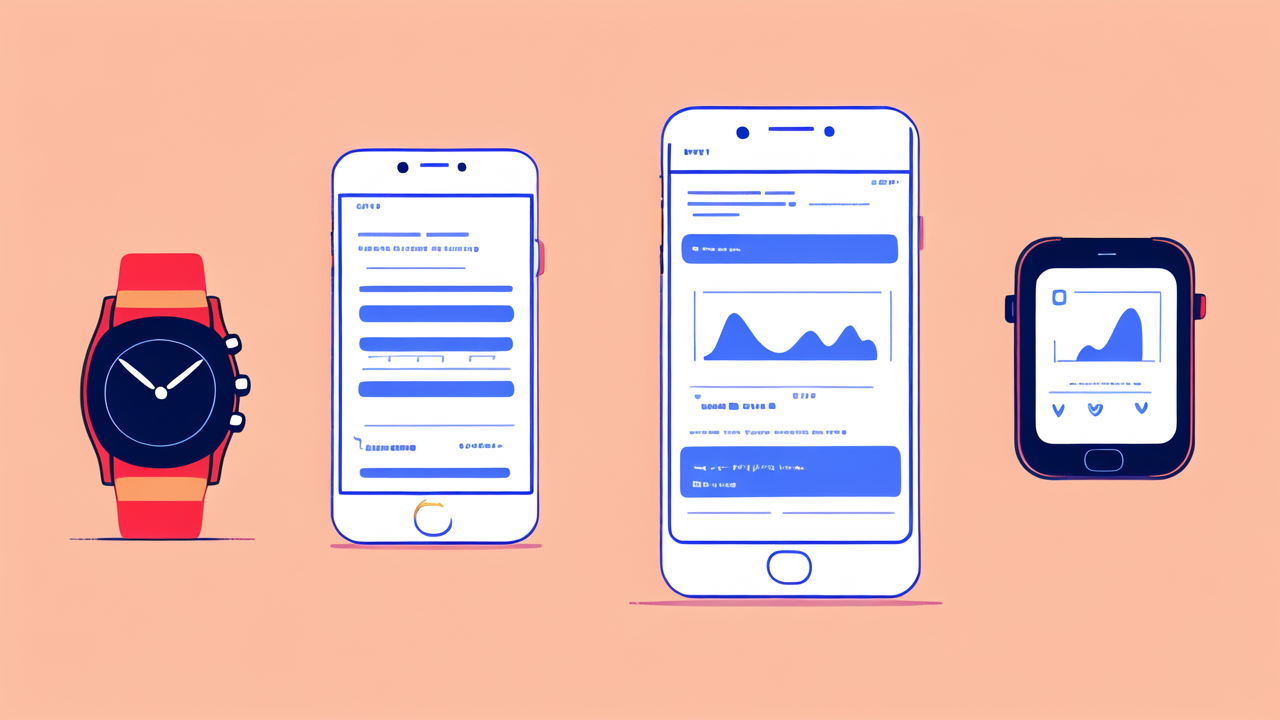Understanding the Evolution of Smart Watches in the United States
The inception of the smart watch revolution
Smart watches have come a long way since their early days. The first models were basic, with limited features. They could tell time and maybe track steps. But they lacked the advanced functions we see today.

The real revolution began when tech giants entered the market. Apple, Samsung, and Google brought their expertise to wearables. This sparked a new era of innovation. Suddenly, smart watches could do much more than just tell time.
These devices became mini-computers for our wrists. They could show notifications, track fitness, and even make calls. The evolution was rapid, with new features added each year. Smart watches went from novelty items to essential gadgets for many.
Technological advancements fueling growth
Smart watch growth has been driven by impressive tech advances. Processors have become smaller and more powerful. This allows for faster performance in a compact device. Battery life has improved, letting users wear their watches longer.
Displays have also gotten better. They're now brighter, sharper, and more responsive. Many smart watches use OLED screens for vibrant colors and deep blacks. Touch sensitivity has improved, making navigation easier.
Sensors have played a big role in smart watch evolution. Heart rate monitors, GPS, and accelerometers are now standard. These enable accurate fitness tracking and location services. Some watches even include ECG and blood oxygen sensors for health monitoring.
Connectivity has also advanced. Bluetooth, Wi-Fi, and cellular options keep users connected. This allows for standalone functionality without needing a phone nearby.
Comparative analysis: Smart vs. Traditional watches
Smart watches offer features that traditional watches can't match. They provide instant access to notifications, apps, and fitness data. Users can check messages, control music, and track workouts from their wrist.
Traditional watches excel in longevity and style. They don't need charging and can last for years or decades. Many people prefer their classic look for formal occasions. Smart watches, while stylish, still have a tech-focused appearance.
Battery life is a key difference. Traditional watches can run for months or years on a single battery. Smart watches typically need daily charging, though some can last several days.
Customization is another factor. Smart watches let users change watch faces with a tap. Traditional watches have fixed designs, though bands can be swapped.
Price points vary widely for both types. High-end traditional watches can cost thousands. Smart watches range from budget-friendly to luxury models. The choice often comes down to personal preference and needs.
Key Players and Innovations in the US Smart Watch Market
Leading brands and their market strategies
Apple dominates the US smart watch market with its Apple Watch series. They focus on seamless integration with iPhones and health features. Their strategy includes regular updates and a strong ecosystem.

Samsung is a strong competitor with its Galaxy Watch line. They offer compatibility with both Android and iOS. Their watches feature rotating bezels for easy navigation. Samsung emphasizes fitness tracking and long battery life.
Fitbit, now part of Google, targets health-conscious consumers. They offer a range of devices from basic trackers to advanced smartwatches. Fitbit's strategy centers on comprehensive health monitoring and coaching.
Garmin focuses on sports and outdoor enthusiasts. Their watches offer rugged designs and advanced GPS features. They target niche markets like runners, cyclists, and adventurers.
Fossil brings fashion-forward designs to smart watches. They partner with various brands to offer stylish options. Their strategy appeals to those who want tech in a traditional watch look.
Disruptive technologies reshaping the smart watch landscape
Artificial Intelligence is changing how we interact with smart watches. AI assistants can now understand context and provide personalized responses. This makes voice commands more natural and useful.
Improved sensors are enabling new health monitoring features. Some watches can now detect falls or irregular heart rhythms. This expands their role in personal safety and preventive healthcare.
Flexible displays are on the horizon for smart watches. These could allow for larger screens that wrap around the wrist. This may lead to new form factors and use cases for wearables.
Energy harvesting tech is being explored to extend battery life. This could include solar charging or kinetic energy from movement. The goal is to reduce the need for frequent charging.
Haptic feedback is becoming more advanced. This allows for more nuanced notifications and interactions. It can even be used for navigation or non-verbal communication.
The role of fitness and health monitoring in smart watch innovation
Fitness tracking has been a core feature of smart watches from the start. Step counting, calorie tracking, and workout logging are now standard. But recent innovations go much further.
Advanced heart rate monitoring can now detect potential issues. Some watches can take ECGs and alert users to irregular rhythms. This turns smart watches into proactive health devices.
Sleep tracking has become more sophisticated. Watches can analyze sleep stages and provide tips for better rest. This helps users understand and improve their overall health.
Stress monitoring is a growing focus. Watches use heart rate variability to gauge stress levels. They can then suggest breathing exercises or meditation to help users relax.
Women's health features are being added to many smart watches. These include menstrual cycle tracking and fertility predictions. This expands the watch's role in comprehensive health management.
The Future of Smart Watches: Trends and Predictions
Integrating AI and Machine Learning
AI will make smart watches more intelligent and personalized. They'll learn user habits and preferences over time. This will allow for proactive suggestions and tailored experiences.

Machine learning will improve health insights. Watches will better understand individual health patterns. They could predict potential issues before they become serious.
Natural language processing will enhance voice interactions. Users will be able to have more complex conversations with their watches. This could make them powerful personal assistants.
AI could enable new features like real-time language translation. This would be useful for travelers or in multicultural settings. The watch could become a universal communication tool.
Predictive analytics might help with daily planning. The watch could suggest optimal times for workouts or meetings. It could even adjust your schedule based on your energy levels and commitments.
The impact of 5G on smart watch functionality
5G will enable faster data transfer for smart watches. This means smoother streaming and quicker app updates. Users can enjoy high-quality video calls directly from their wrist.
Low latency will improve real-time features. This could enhance gaming or augmented reality experiences on smart watches. Response times for voice commands will also improve.
5G may enable more standalone functionality. Watches could perform complex tasks without needing a paired phone. This could make them true replacements for smartphones in some cases.
Improved connectivity could lead to new use cases. Smart watches might interact more seamlessly with smart home devices. They could become central hubs for personal IoT networks.
5G could enhance location services and navigation. More precise GPS and faster data could improve mapping and directions. This would be especially useful for sports and outdoor activities.
Ethical considerations and consumer privacy in smart watch development
Data privacy is a growing concern with smart watches. They collect sensitive health and location data. Companies must be transparent about data use and storage.
Security measures need to keep pace with functionality. As watches do more, they become more attractive targets for hackers. Robust encryption and regular updates are crucial.
There's a balance between helpful features and invasive monitoring. Users should have control over what data is collected and shared. Opt-in policies for new features are becoming standard.
The use of AI raises questions about decision-making. If a watch suggests health interventions, who is responsible for the outcomes? Clear guidelines are needed for AI-driven advice.
Workplace use of smart watches poses ethical questions. Employers might want to track productivity or health. But this could infringe on worker privacy. Clear policies are necessary.
As smart watches evolve, so must the conversation about their impact. They offer great benefits but also new challenges. Responsible development will be key to their continued success.




Leave a comment
This site is protected by hCaptcha and the hCaptcha Privacy Policy and Terms of Service apply.